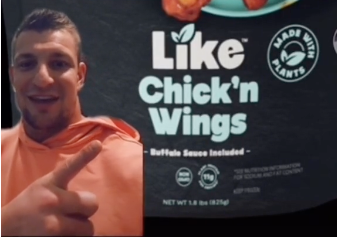For realtime insights, follow us on LinkedIn
A roundup of Stagwell’s work at Super Bowl 2022:
Stagwell’s agencies are transforming marketing – on one of the most captive fields for national marketing, the Super Bowl. Several of our agencies are showing up at the Big Game this year: Anomaly for Meta, Vroom and Expedia; 72andSunny for the NFL; Forsman & Bodenfors for Polestar; and more. Off the TV screen, our agencies are innovating with omnichannel efforts that tap into the fever and fandom of the big game to drive powerful consumer moments for their brand partners.
We believe that there’s a new definition of success for advertisers at the Super Bowl, and it’s driven by digital transformation and changing consumer expectations around brands and experiences. Stagwell is leading the charge in supporting brands as they navigate this new dynamic – explore Stagwell’s presence at The Game, both traditional and less so, below.
But before you dive in:
Captain Morgan x Anomaly
Captain Morgan’s high-tech punch bowl syncs with real-time game data to keep fans in the loop, even when they’re getting a refill.
Meet the Super Bowl snack table addition you never knew you needed: the Captain Morgan Super Bowl Punch Bowl. Anomaly worked with the Captain Morgan team to bring to life the bowl, featuring stadium-inspired lights and sound, Bluetooth speakers, subwoofers and LED graphic equalizers that sync with real-time game data to create an immersive brand experience.
Plus, don’t miss it’s apperance on Jimmy Fallon.
Cenex x Colle McVoy
Colle McVoy created a new campaign for Cenex that celebrates the quirky, charming and often humorous moments of connection that people experience at their local convenience stores. The campaign shows how its 1,500 locations in 19 states power communities while helping to connect people. It’s the next evolution of the brand’s successful Powered Locally platform and includes six :15 spots, two debuting in a few weeks during Super Bowl 56 in 20 Midwest regional markets.
Crosstown Rivals (premiering 2/13/22)
Local Entertainment (premiering 2/13/22)
CUE Health x Doner
Like COVID itself, at home testing company CUE is quick to adapt, putting together a spot in just eight days with Doner. Voiced by Gal Gadot, the ad positions the smart at home testing technology in conversation with a family’s other smart home devices – just another addition to the growing suite of at technologies that keep us safe, run more efficiently, and provide peace of mind. And while COVID is top of mind now, CUE promises that they’re just getting started.
How COVID Testing Brand CUE Put Together a Super Bowl Ad in 8 Days (AdAge)
Expedia x Anomaly
Ewan McGregor gives a convincing plug for the power of experiences over ‘stuff’
As the travel industry looks to continue to gain footing and recover from COVID-drivel losses, Expedia is leading the pack in its commitment to the Big Game with a spot created by Anomaly. With an emphasis on experiences over things, the spot aims to redefine the relationship between the platform and its customers, while challenging the expectations that travelers may have for Expedia and its sister brand, Vrbo.
‘Ewan McGregor and Expedia have Teamed Up to Give Away Free ‘Trips’ on Super Bowl Sunday’ (Forbes)
‘Why the 2022 Super Bowl Makes Sense for Brands’ (AdAge)
‘Can Super Bowl Ads Make Expedia Group the Nike of Travel?’ (AdWeek)
Groupon x Allison+Partners
Gronk is getting out of town… and opening his hope to one lucky winner for the experience of the lifetime.
Allison+Partners led PR for Groupon’s “Party Like a Player” Super Bowl sweepstakes campaign featuring Rob Gronkowski that underscored the brand’s positioning as the go-to experience marketplace. The team secured coverage in USA Today, TMZ Sports, ABC Audio, Travel + Leisure and many more resulting in 3.7B impressions (and counting) in its first week.
LikeMeat x 72andSunny
LikeMeat is celebrating the Big Game with a TikTok scavenger hunt, created by 72andSunny and Blue Hour Studios. To promote its plant-based Chick’n Wings product launch, LikeMeat has invited TikTok users to hunt for digital clues that crack a secret code. Those who unlock the code have a chance to win two free tickets to the Super Bowl as well as other LikeMeat-branded prizes. It’s yet another example of brands going digital-first for the big day, eschewing traditional spots for lower-budget, higher impact activations to connect with their audiences.
Why a plant-based food company started the first TikTok scavenger hunt featuring Gronk just in time for the Super Bowl (Digiday)
Got Milk? x GALE
The milk industry is making a statement at this year’s Super Bowl – that what you’re seeing on the field is not the whole picture. Their spot, airing on the NFL Network and created by GALE, is an inclusive look at the power of women in sport, even (and especially) where they aren’t expected. Featuring women from across the Women’s Football Alliance, the tagline “Football is Football” encourages a broader look at the game and the powerful changemakers behind it.
NFL x 72andSunny
After topping the USA Today Ad Meter last year, 72andSunny + NFL are returning to the screens this year just before halftime with another spot that aims to capture the magic, legacy and power of the game. Featuring cutting edge puppetry and CGI technology from experts at Swaybox, the ad features legendary NFL talent in unexpected places and spaces – bringing the game right into viewers homes. Get ready to bring down the house.
‘
”They Will Be Blown Away’: NFL’s Next Step in ‘Future-Proofing’ Audience Begins with a Super Bowl Ad’ (USA Today)
‘Behind the NFL’s Super Bowl Ad Plans, Which Include Puppetry and CGI’ (AdAge)
Polestar x Forsman & Bodenfors
In it’s first Super Bowl ad, Polestar, the high-end EV company with roots in Sweden, joined a spate of automakers – with a very different approach. The minimalist 30-second spot, executed by F&B, places a focus on what it doesn’t have – gimmicks, punchlines, scandals and distractions. It’s all about the future, driven by electric.
‘Swedish EV Startup Polestar Makes Super Bowl Debut with a “No Cliche” Approach’ (Ad Age)
Quest Oculus for Meta x Anomaly
In it’s first Super Bowl as the newly-rebranded Meta, Oculus Quest is doubling down on the metaverse, with a clear message to the audience – the metaverse is already here, and we’re waiting for you. The full spot, created by Anomaly and premiered on Good Morning America on Feb. 10, shows a metaverse in full swing – including a very-real post-game concert that will be headlined by the Foo Fighters. Its giving people a reason to visit the virtual reality world Meta is building – and pulling viewers into the future they are creating.
‘Inside Meta’s Super Bowl Commercial for the Metaverse’ (AdAge)
‘Meta’s Super Bowl Commerical Depicts Old Brand’s New Life in the Metaverse’ (AdAge)
Tillamook x 72andSunny
72andSunny created a shoppable, digital only music video, Chedderbration to mark National Cheddar Day coinciding with the Super Bowl. The multimedium campaign includes limited edition merch, unique cheddar-based recipes, and coupons accessible only through the Cheddarbration homepage.
Vroom x Anomaly
Vroom’s Super Bowl 2022 commercial sings the praises of a reliable broker – literally
Anomaly makes a return Super Bowl appearance with Vroom, the online car retailer who is literally singing the praises of having a reliable dealer on your side during the car selling process. The 30 second spot again features high-tempo choreography from celebrity choreograper Mandy Moore.
‘Vroom Releases Super Bowl 56 Ad ‘Flake: The Musical” (AdAge)
Related
Articles
Acquisition, In the News, Press Releases
May 02, 2024
STAGWELL (STGW) ACQUIRES MONTREAL-BASED LUXINE RELATIONS PUBLIQUES
The newly augmented Quebec offering will operate as LuxineVeritas.
Augmented Reality, In the News, Marketing Frontiers
Apr 26, 2024
Legacy Brand, Meet Next-Gen Commerce: Bomb Pop Takes Roblox
Bomb Pop is the most popular ice pop that nobody…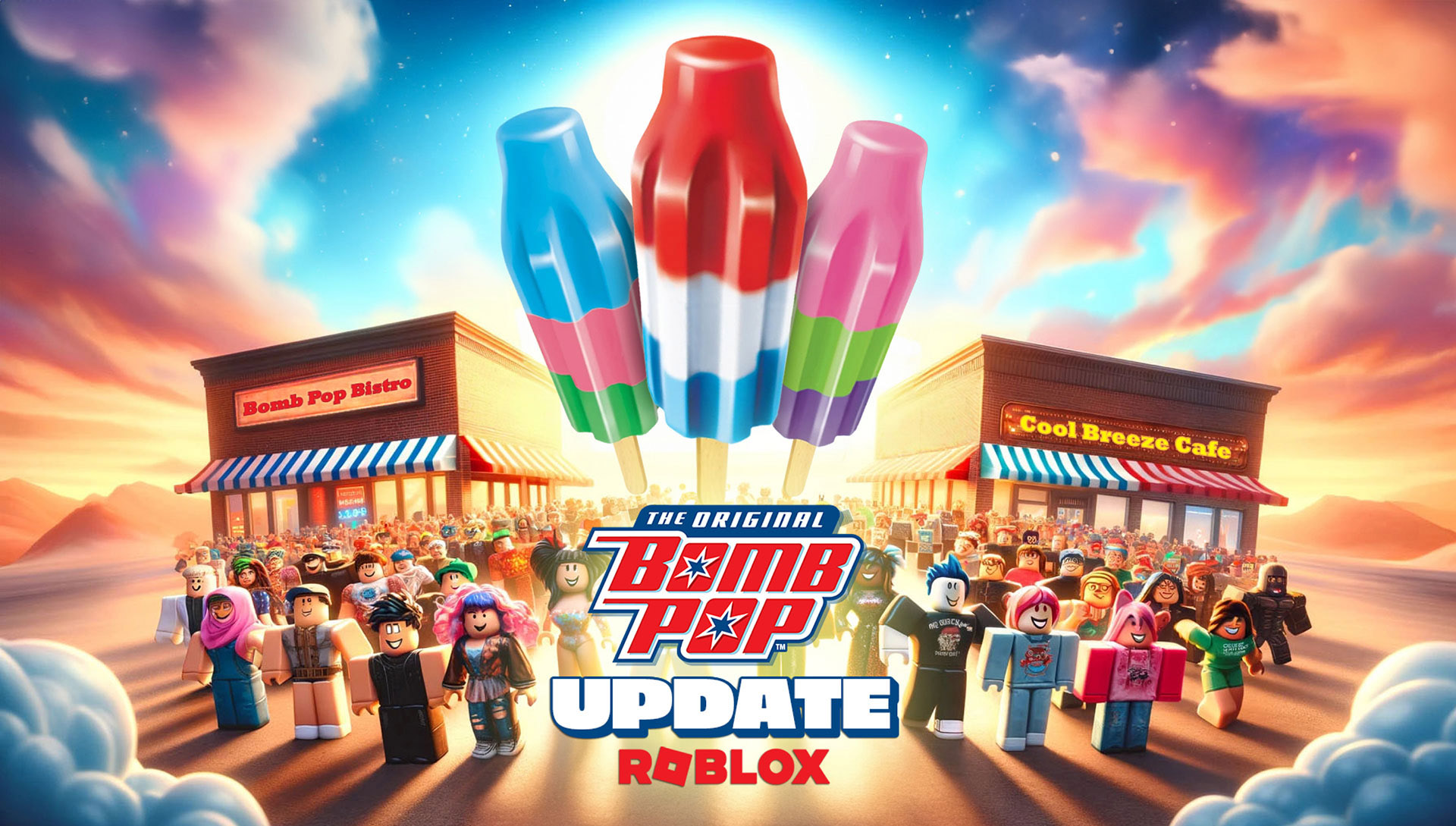
Artificial Intelligence, In the News
Apr 25, 2024
Embracing Comfort Unapologetically with First-Ever AI-Powered La-Z-Boy ‘Decliner’
Building the first-ever AI-powered recliner for the brand that invented…
Newsletter
Sign Up
By Mark Penn, Chairman and CEO, Stagwell
CONTACT
hello@stagwellglobal.com
FEATURING
Marketing Frontiers is a new series from Stagwell exploring the methods, mediums, and messes modern marketers will grapple with over the next decade as they chart transformation in the discipline. This February, Stagwell is exploring NFTs.
NFTS are an opportunity brands shouldn’t pass on.
Two strategies are driving value: incentivizing real-world action with NFTs, and using them to build loyal long-term consumer segments.
In the old days, marketing companies incentivized consumers with free toasters. Today, they give you an NFT, a digital good that may be even more useful. It’s easy to confuse the NFT craze with other emerging new technologies but they stand apart as offering several unique areas of potential value. First, they provide individually usable coupons or discounts that can be tracked; Second, they offer permanent digital copies of paper goods; and third, they offer collectible opportunities that could soar in value,
Brands want to experiment with NFTs but are struggling to determine whether it’s a fad or an effective long-term brand strategy. They must balance wanting to be first movers on exciting new tech that is racking up serious investment while pursuing virtual items as ways to connect digital and in-person experiences. But barriers make this investment difficult, including the expensiveness inherent in producing some types of NFTs, the wild fluctuation in selling prices, and the knowledge gap among consumers who are confused or otherwise skeptical about the technology.
While it’ll be a while before we can gauge the long-term impact of the NFT activations in the market now, it’s clear from early experiments that two styles of NFT activations are proving successful: those that connect digital incentives to real-world action, and those that help build long-term, loyal consumer segments for brands – either within or beyond their usual consumer base. Sports marketers and luxury fashion brands are leading the charge on effective NFT adoption.
NFTs are too important of an opportunity for today’s brands to pass on.
Incentivizing and Rewarding Real-World Action: Sports Brands
This Super Bowl, the NFL and Ticketmaster are partnering to provide in-person spectators free NFTS that commemorate their tickets and serve as digital keepsakes, giving an added boon to die-hard fans for their commitment to filling stadiums and solving for consumers who want a souvenir from the experience but are prone to losing ticket stubs. In addition to the free, wide-cast NFTs, a set of limited-edition tokens will be released to commemorate past Super Bowls hosted in the city of Los Angeles.
Giving consumers something meaningful for attending in-person events that taps into fandoms, hometown loyalty, and the desire to remember exciting experiences is one avenue of common-sense NFT adoption. These are not the flashy, expensive digital art being auctioned the NFT world is known for, but affordable, scaled and tied directly to an activity that fans have already shown engagement with: collecting stubs. These efforts teach a simple lesson about how to forge new paths with emerging technology: don’t reinvent the wheel; look for ways NFTs enhance or supplement existing real-world action.
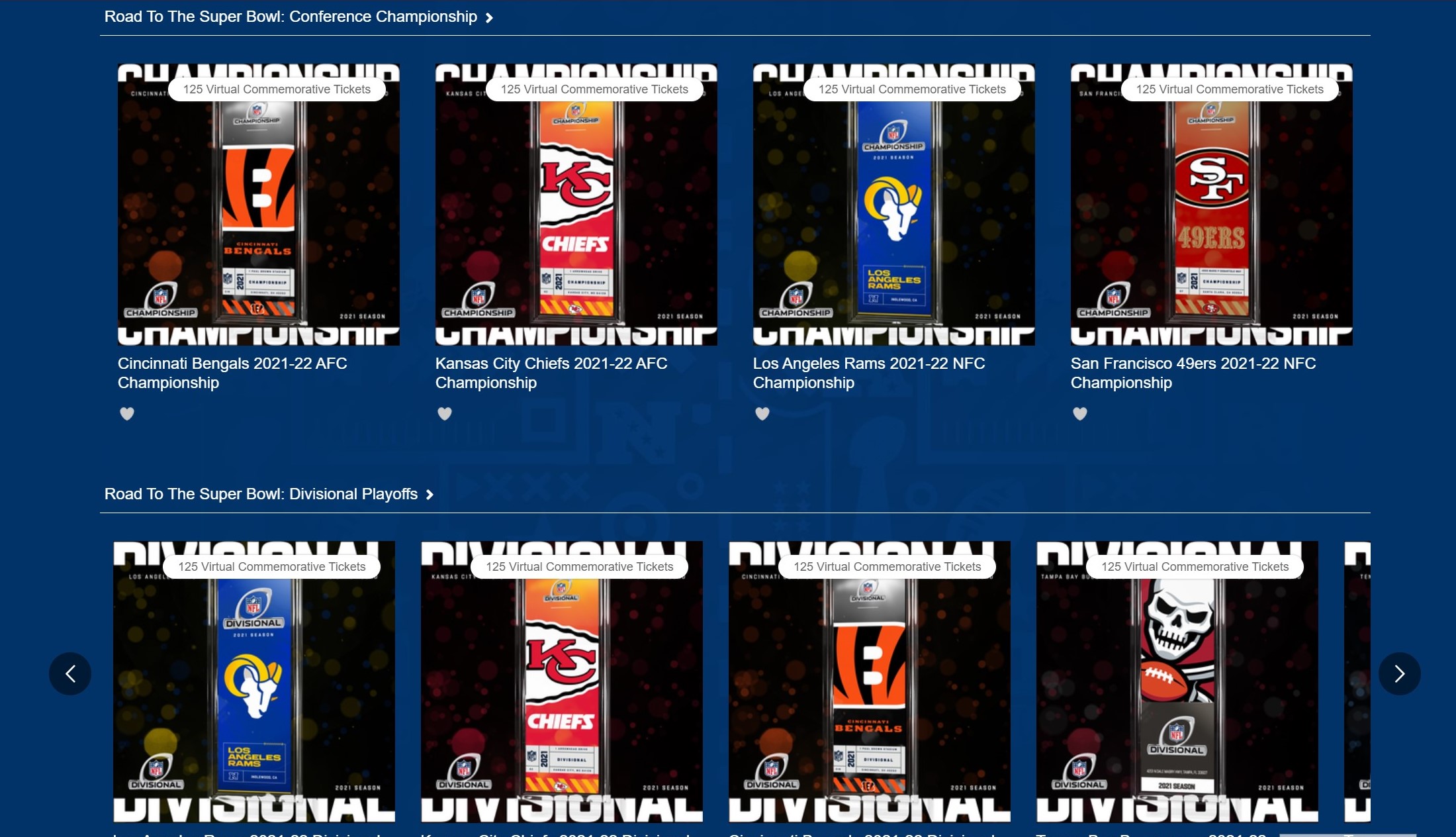
A screenshot of the N.F.L.’s Virtual Marketplace for NFTs and other collectibles.
Building Loyal Long-Term Consumer Segments: Luxury Fashion and Apparel Brands
NFL/Ticketmaster’s effort doubles as a window into how NFTs are tapping into supercharged fan bases to build long-term, loyal consumer segments. Beyond sports, luxury fashion brands use NFTs to engage up-and-coming, nascent consumer segments and prime them for long-term engagement. Louis Vuitton rolled out an adventure game commemorating its founder’s 200th anniversary birthday, featuring a selection of hidden NFTs and a set of ultimate prizes tied to exclusive, real-world offerings. And this year, NYFW goes virtual – presented by Decentraland, the popular Metaverse destination. Decentraland will host a digital component to NYFW that includes runway shows and immersive experiences, branded NFT collections, and other collectibles and digital tokens. These efforts engage a younger set of consumers who may not yet have the disposable income for luxury material purchases in real-life but are attracted to the exclusiveness of the brand and excited for the digital follow-through.
We think NFT’s are too important an opportunity for today’s brands to take a pass on. We believe every brand needs to play in the space in coming years and integrate NFTs into their campaigns. Fans want digital assets of their favorite players; traceable coupons make great targeted assets to enhance customer experience; and everyone loves to collect something that could be valuable.
Sign up to receive more insights from Stagwell and follow us on LinkedIn to stay abreast of news, work, and perspectives from our global network.
Related
Articles
Acquisition, In the News, Press Releases
May 02, 2024
STAGWELL (STGW) ACQUIRES MONTREAL-BASED LUXINE RELATIONS PUBLIQUES
The newly augmented Quebec offering will operate as LuxineVeritas.
Press Releases
May 01, 2024
STAGWELL INC. (NASDAQ: STGW) REPORTS RESULTS FOR THE THREE MONTHS ENDED MARCH 31, 2024
NEW YORK, May 1, 2024 /PRNewswire/ -- (NASDAQ: STGW) –…
Events, In the News, Press Releases
Apr 18, 2024
STAGWELL LAUNCHES LONDON HUB TO SUPPORT EUROPEAN EXPANSION
Stagwell brings together multidisciplinary agencies under one roof to prioritize…
Newsletter
Sign Up
By Stagwell Insights
CONTACT
hello@stagwellglobal.com
Marketing Frontiers is a new series from Stagwell exploring the methods, mediums, and messes modern marketers will grapple with over the next decade as they chart transformation in the discipline. This January, Stagwell is exploring the new frontiers of Augmented Reality.
Retail happens at the convenience of the consumer.
AR can change when and where brands build experiences, the discovery-to-purchase funnel, and how brands navigate the blended shopping experience.
Three trends will lead retail AR: Try Before You Buy, New Discovery Dimensions, and the Gamification of Retail.
The next decade of retail will no longer unfold on a brand’s terms. Digital transformation and the blending of in-person and physical experiences means commerce happens at the consumer’s convenience: on mobile devices, in between meetings, on the subway, and everywhere in between. This pivot will fundamentally change when and where brands build experiences, the discovery-to-purchase funnel, and the need for solutions that adopt the functional convenience of brick-and-mortar retail across any digital platform.
This change is more of an opportunity than a challenge. Mobile AR in retail has unlocked three trends worth capitalizing on for brands seeking creative strategies for adopting AR across their retail experience.
Try Before You Buy
Apparel and home goods have fine-tuned the use of mobile AR to “try before you buy,” allowing consumers to scale clothing sizes to their figure using their cellphone’s cameras or gauge whether a futon will fit in their apartments. Brands that haven’t sought ways to activate mobile AR yet should jump on the trend. Those who have should look for opportunities to push beyond rendering individual products in mixed-reality to build entirely virtual closets and storefronts, in line with the experiments brands like Kohl’s, FaceCake, and Snap have pioneered.
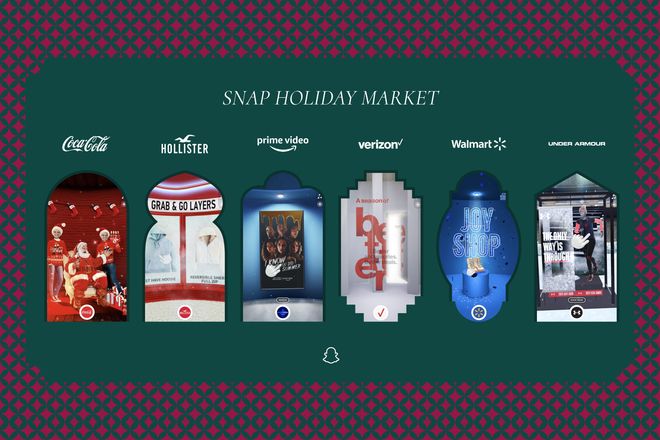
Give consumers the ability to purchase, try on, see reviews, engage with a customer specialist, and more without leaving the comfort of their homes, and you crack the convenience code. Imagine the world of possibilities for more addressable marketing, influencer integrations, and social commerce.
AR isn’t just landscape for apparel and home goods. Food and CPG brands might foray into more AR content experiences that illuminate how their products can be blended to create exciting recipes. Picture Kraft or Nestle emblazoning their packages with QR codes that activate AR chef’s assistants on mobile to teach you the perfect way to blend pantry staples to make a complicated feast.
New Dimension for Discovery
The importance of convenience for consumers in the digital era doubles as an attention and discovery problem. Besieged by brand messaging, consumers have difficulty finding relevant and valuable marketing and promotions when they desire them. Those with smaller marketing budgets struggle to make noise in the din, barred from prime advertising real-estate. AR unlocks a new layer or dimension of marketing that can power intelligent, sustainable content opportunities to aid today’s brands in discovery. Location-specific AR overlays can add flair to major promotions, bring virtual participants closer to the brick-and-mortar experience, and transform common areas like subway trains or city parks into rich canvasses for marketing integrations.
Savvy businesses might partner with regional publishers for guerilla OOH activations, placing QR codes at major city throughways that open up an AR directory of local retailers, shopping centers, and other nearby experiences. This would allow consumers to access an engaging universe of directional content while cutting expenses for regional media distribution and carving out more stages for branded placement and authentic advertising.
Gamification of Retail
The trend towards experiential retail underscores a key point about today’s consumers: digital experiences are never wholly individual. It’s why AR shows such promise for live events and retail. If you can add a layer of shared competition to your retail experiences, you can power deeper consumer engagement. Sporting apps that pit peers against each other to meet fitness goals could enhance that experience with an AR layer that allows for connection with nearby runners, displays local challenges like conquering a particularly steep hill, and rewards users with a coupon or digital assets.
In-store brands might roll out limited-time activations like scavenger hunts to encourage shoppers to engage with as many AR-powered product displays as possible to unlock additional savings at the counter. A retailer might also add an AR layer encouraging added engagement with overstocked items, bring product displays to life with virtual influencers rendered in AR, or use augmented reality content to add local color about in-store products. With experiments in NFTs and other virtual tokens and commodities, brands have an array of new tools at their disposal to encourage and reward hybrid engagement.
What to do?
Our verdict: now is the time to experiment with and fine-tune brand-relevant strategies for working AR layers through the marketing stack. Mixed reality can be a serious investment. Brands should look for existing partners who can help deliver AR technology via platforms consumers are already engaging with to minimize the start-up costs of a new foray into AR.
The question of budgets and investment aside, our advice about AR mirrors our advice about many new marketing frontiers: before running blindly in their pursuit, ensure the technology is additive to the digital layer of your brand. Ask yourself how AR will add dimensionality or a compelling new flavor of experience to the products and services you provide your consumers. We are bullish that AR’s value is creating shared experiences and enhancing convenience for today’s consumers. If your AR strategy doesn’t accomplish those two goals, you may be better off experimenting with other modern digital marketing tools.
Finally, AR and the industry-wide focus on the metaverse is an opportunity to push innovation and creativity further than ever before. Don’t just replicate content and experiences in AR; redefine them. View augmented reality as an opportunity to unlock new ways to connect and communicate with your brand’s consumer base and zealously chase a more creative future.
Related
Articles
Acquisition, In the News, Press Releases
May 02, 2024
STAGWELL (STGW) ACQUIRES MONTREAL-BASED LUXINE RELATIONS PUBLIQUES
The newly augmented Quebec offering will operate as LuxineVeritas.
Press Releases
May 01, 2024
STAGWELL INC. (NASDAQ: STGW) REPORTS RESULTS FOR THE THREE MONTHS ENDED MARCH 31, 2024
NEW YORK, May 1, 2024 /PRNewswire/ -- (NASDAQ: STGW) –…
Events, In the News, Press Releases
Apr 18, 2024
STAGWELL LAUNCHES LONDON HUB TO SUPPORT EUROPEAN EXPANSION
Stagwell brings together multidisciplinary agencies under one roof to prioritize…
Newsletter
Sign Up
By Mark Penn, Chairman and CEO, Stagwell
and Josh Beatty, Founder and CEO, ARound
CONTACT
Mark Penn
mark.penn@stagwellglobal.com
FEATURING
Marketing Frontiers is a new series from Stagwell exploring the methods, mediums, and messes modern marketers will grapple with over the next decade as they chart transformation in the discipline. This January, Stagwell is exploring the new frontiers of Augmented Reality.
Event-based AR can help marketers attract audiences at scale for new forms of shared, blended, and branded experiences.
We tend to envision AR as a means of distraction but there is transformative power in combining the physical and the augmented for highly immersive, interactive experiences.
AR at live sporting events can help create persistent, relevant, and shared experiences that will engage casual fans while enhancing the experience for sports fanatics.
Augmented reality has transformed from a bespectacled fad to an emergent marketing frontier for modern brands in recent years. Still, there is still much work to be done to create AR audiences at scale, attracting the masses.
Why is it hard to scale AR? Because – to date – AR has focused on the individual. We believe that the transformational power of AR is in creating experiences that bring people together around a common place and purpose. Purely functional applications like seeing how a piece of furniture might fit into your home are useful but do little to attract the mass consumer audience AR needs to go mainstream.
What if instead we focus our AR experimentation on augmenting shared experiences like sporting events, in stadiums with captive audiences that are naturally some of the most enthusiastic consumer bases in the world? As sports leagues adapted to the pandemic, marketers learned consumers hunger for more dynamic engagement with their favorite teams and players. They want to get closer to the action, closer to the players, and bond with one another over experiences they’ll remember for a lifetime.
Let’s use AR to get there. We believe sports brands have a strong opportunity to power more immersive and meaningful experiences with the next frontier of augmented reality: event-based AR.
The promise of event-based AR is to bring content to context, providing for more immersive and meaningful experiences connected to the events and people around us. AR can fuel moments of catharsis for the consumer, creating powerful emotional connections to brands, stadiums, and other key fan and player locations.
We already know sports fandom is a lifelong affiliation. Augmented reality can help brands extend that fever into a new dimension, offering interaction, socialization and new forms of connection
ARound helps venues and retailers create augmented reality experiences for live events, bringing audiences together at scale where they can play, interact, and socialize in completely new and exciting ways.
‘Mario Party But With 30,000 People’
Sports marketers can use augmented reality to power stronger consumer experiences with fun, relevant, and shared brand moments.
The transformational power of AR is in creating experiences that bring people together around a common place and purpose.
Building Fun Moments
Every Thanksgiving, one relative is bound to recount an infamous fly-ball he caught from the seats at a baseball game growing up. And even the least sports-engaged Bostonian becomes a model hometown fan when the Patriots are due for more Super Bowl wizardry. Sports marketers know best that the memories fans make at sporting events are some of the most persistent experiences they’ll have in their lives.
So why not use AR to bring more of those experiences to a wider swath of fans?

Everyone might not be able to carry a flyball away with them as a lifelong souvenir, but every fan can experience moments that will turn into memories. With AR, fans in seats with lackluster angles can be brought into the action while players personalities can become larger than life, creating memorable moments that will dominate social media. Adding more experiential touchpoints via AR can make a standard Sunday game fodder for “remember when!” stories for years to come.
Serving Relevant Content
Using AR to add context to content can help brands further engage consumers on location, arming them with an agile new tool for building the compelling experiences that drive value. With event-based AR integrations, brands can adapt flexible content based on everything from proximity to the main stage to the affiliations of fans. Advertising in-game can be tailored, too, to reflect first-party inputs like a consumer’s favorite sports team, hometown, and more. Ultimately, the tech will serve as a powerful way to recapture and convert attention otherwise lost to consumers’ mobile browsing habits during live events.
Keeping fans engaged before, during, and after the game with personalized content enables a myriad of brand integrations. With just baseline first-party data input by users about team fandom, hometown, favorite players and preferences for merchandise, a whole universe of addressable AR content opens up, activated through their mobile devices.
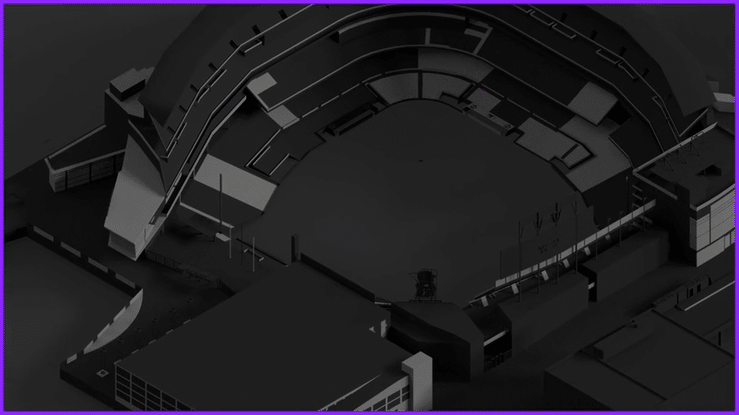
Creating Shared Social Experiences
Let’s be honest: while fans may be physically captive, of a sort, at in-person sporting events, it’s another game to capture and keep their attention. At the same time, sports is inherently social – something that positions it well to beat the AR trap of failing to scale by being mired in individual experiences. Leveraging AR to extend shared moments through every part of the game will help build closer connections between teams, players, and their fans, bringing talent on the field to life in multi-sensory, bigger-than-life arenas.
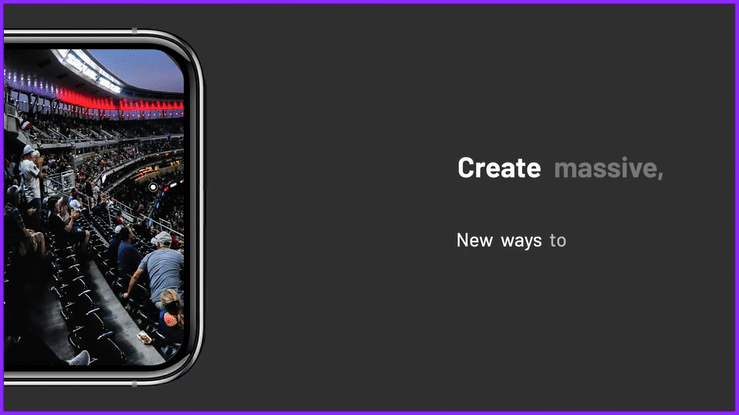
Layering gamified content, player stats and optional replays in AR during games can keep fans focused on and interacting with the field. Brands might stoke team rivalries with interactive competitions during games, with fans’ actions contributing to an aggregate team score. At the end of a game, fans from the winning team might get virtual collectibles or NFTs that build up to larger prizes with more and more engagement at AR-enabled locations, ultimately winning season passes or exclusive IRL merchandise. During intermissions, fans could open their phones to participate in competitions like tug of war fueled by the in-app engagement of 30,000 people, with rival team mascots scaled as AR avatars on the field. You can even imagine beloved mascots like The Phillie Phanatic or Mr. Met swarming the field with AR-doubles for intermission shows that extend beyond the physical to engage fans throughout the entire stadium, not just close to the field.
While our focus is ostensibly on AR moments connected to physical locations and powered by mobile, it’s not hard to see how marketers can activate AR-integrated apps or hardware to plug at-home fans into live sports.
Related
Articles
Acquisition, In the News, Press Releases
May 02, 2024
STAGWELL (STGW) ACQUIRES MONTREAL-BASED LUXINE RELATIONS PUBLIQUES
The newly augmented Quebec offering will operate as LuxineVeritas.
Press Releases
May 01, 2024
STAGWELL INC. (NASDAQ: STGW) REPORTS RESULTS FOR THE THREE MONTHS ENDED MARCH 31, 2024
NEW YORK, May 1, 2024 /PRNewswire/ -- (NASDAQ: STGW) –…
Events, In the News, Press Releases
Apr 18, 2024
STAGWELL LAUNCHES LONDON HUB TO SUPPORT EUROPEAN EXPANSION
Stagwell brings together multidisciplinary agencies under one roof to prioritize…
Newsletter
Sign Up
This week marked the National Retail Federation’s 2022 conference, the premiere summit of the world’s largest retailers. Stagwell was listening in, as well as talking with lead retail experts and practitioners from brands like Johnson & Johnson, AERIN, Bayer, Snap, and more.
So what do marketers need to know? We recap the top five trends and takeaways to emerge from the week below.
If you’d like to learn more, email Beth Sidhu. Interested in more retail insights? Click here for our retail report card and please sign up for more insights here.
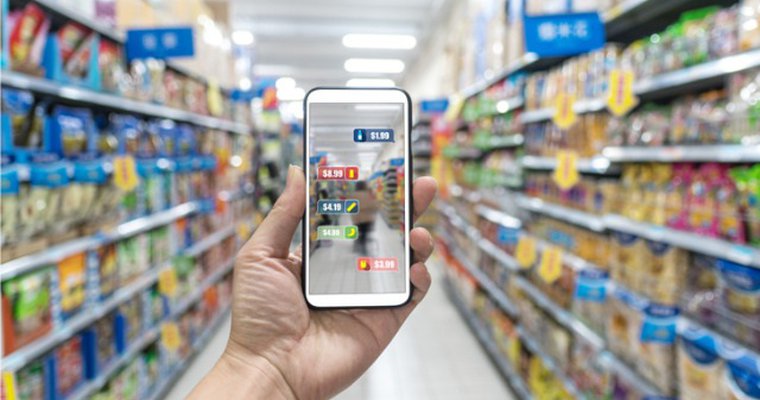
1. Blended Retail Experience is Here to Stay
The pandemic accelerated a new template for the shopper journey that sees consumers move frequently across brick-and-mortar and digital touchpoints. Consumers want to shop, browse, and discover on their own terms, using the full range of devices, delivery mechanisms, and in-store ecosystems available to them. Expect retail to continue to trend towards convenience – defined on the consumer’s terms – that is supported by digital layers that add function, streamline experiences, or collapse multiple aspects of the purchasing funnel. Marketers need to invest in seamless handoffs between touchpoints urgently.
2. Safety Will Keep Driving In-Store Shopping Behavior
With variants extending the pandemic for who-knows-how long, health and safety will continue to be top of mind for consumers. Telegraphing your brand’s investment into COVID-19 protocols without veering into the realm of pandemic theater/fearmongering is one way brands can remain in favor with today’s consumers. Marketers should ensure their messaging around safety connects with reality for employees, as the employee-as-brand-ambassador trend popularized by big box retailers like Walmart continues.
3. If Your Commerce Isn’t Connected, What Are You Doing?
Enduring supply chain disruptions will put additional pressure on retail shops to adapt technology and digital tools to further connect their enterprises. To keep apace with customer expectations for faster delivery and order fulfilment, brands need to adapt sophisticated inventory tracking and real-time retail dashboards, as well as look to further synchronize marketing and sales activities.
4. Social Commerce Gets a Lift From Live Streaming
Live commerce – a staple abroad but gaining traction across the U.S. – will mainstream in 2022 as brands need to bridge consumers’ platform and content experiences with their shopping habits. The models abound, from the 24-hour shopping livestreams that drive billions in sales during China’s major retail holiday, Double 11, to more curated influencer streams that tap into micro and nano influencers to tell the stories behind products in more authentic ways. This engagement renaissance will be powered by integrated payment portals, QR codes picture-in-picture digital displays, and other technology enabling a seamless step-through discovery to purchase.
5. Retail Cautiously Experiments with the “M” Word
In the absence of the technology infrastructure to support the much-buzzed about Metaverse, retailers are experimenting with what’s available now – mixed reality tools — to power exciting new experiences that tie the physical world to the digital world. Live events and retail supported by augmented reality can power more engaging shared experiences for consumers, while virtual tokens, avatar outfits, and other digital tokens can extend a brand’s product suite into this burgeoning new dimension of the web.
Related
Articles
Augmented Reality, In the News, Marketing Frontiers
Apr 26, 2024
Legacy Brand, Meet Next-Gen Commerce: Bomb Pop Takes Roblox
Bomb Pop is the most popular ice pop that nobody…
Artificial Intelligence, In the News
Apr 25, 2024
Embracing Comfort Unapologetically with First-Ever AI-Powered La-Z-Boy ‘Decliner’
Building the first-ever AI-powered recliner for the brand that invented…
Augmented Reality
Apr 25, 2024
Playfully Navigating the Google Booth at CES
Google partnered with Left Field Labs to blend its physical…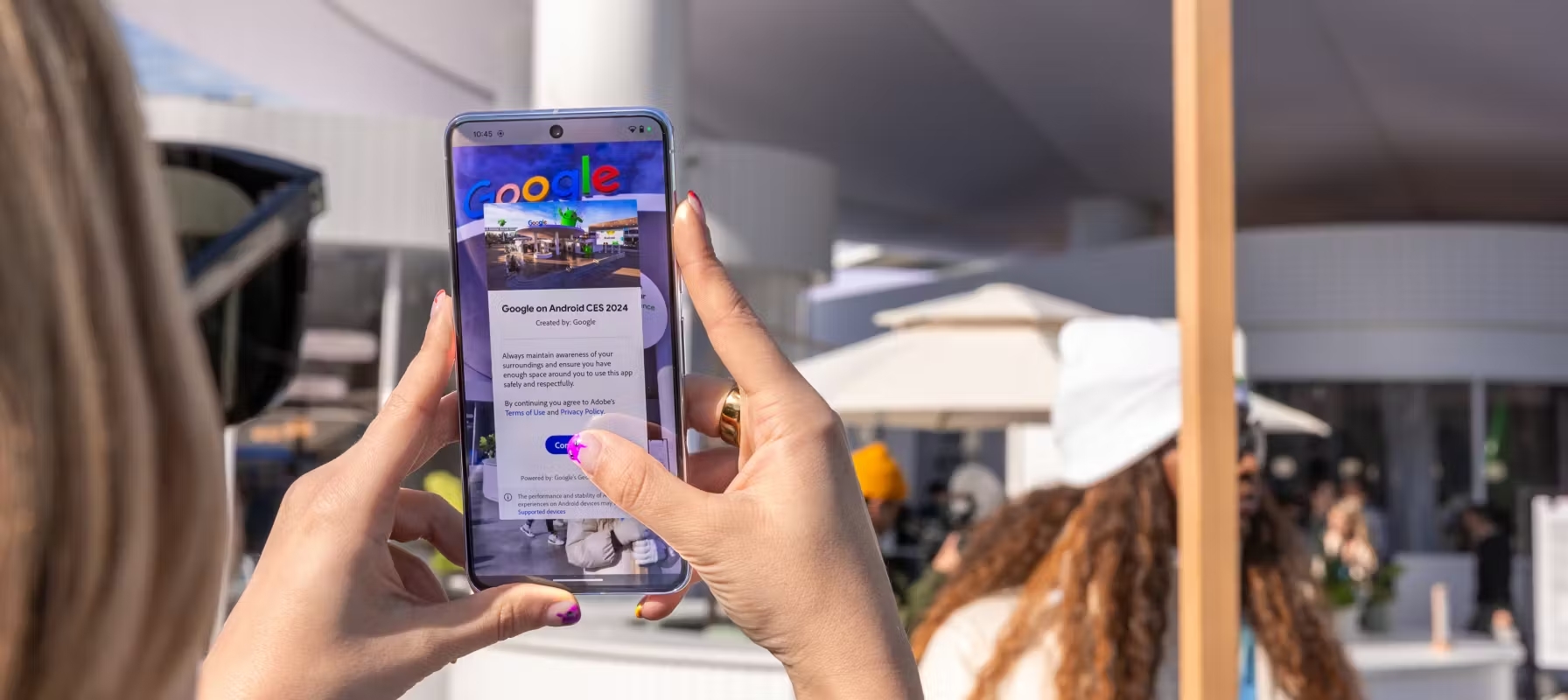
Newsletter
Sign Up
FEATURING
As we reflect on the marketing implications of CES 2022, Web 3.0 is by far the most impactful development that showed up across industries, technologies and capabilities. While in some ways it may be another victim of CES’ shiny veneer versus reality, there are components that are impossible to ignore – namely, the influx of and investment in the metaverse and NFTs.
Stagwell is one of the first movers when it comes to helping brands activate in this nacent space, having supported the launch of MilkPeP’s activation in the Roblox metaverse. On Thursday, January 6, Stagwell convened a lunch and learn, moderated by Axios’ Sara Fischer, to discuss the tactical and theoretical challenges and opportinities presented by Web 3.0. Here are our top 5 takeaways from the conversation:
- COVID WAS A CATALYST, bringing the metaverse into the real world
- BRANDS WILL PLAY A KEY ROLE IN BUILDING TRUST with these technologies and platforms
- NOT EVERY BRAND SHOULD BE IN THE METAVERSE, and not every metaverse is created equal
- METAVERSE + IRL should be a seamless experience
- NFTS are here to stay
Web 3.0 is a nuanced topic, and one that is the opposite of a one-size-fits-all approach. Depending on brand, product, buyer demographic and existing marketing activity, the metaverse and NFTs can fill a very important role (which may be… no role at all. More on that later). Learn more about what it means for brands, creative and the future of the online/offline world.
Praesent rutrum gravida consectetur. Cras vitae pretium urna. Phasellus aliquet, lacus dictum consequat tempor.
1. COVID was a catalyst, bringing the metaverse into the real world
The metaverse would have come eventually (in fact it’s already been here…hello, gaming community!), but the pandemic undoubtedly accelerated the timeline. With the majority of the world going digital, tech companies were pushed to develop products, tools and software that allowed us to do so much more from a virtual setting, exposing a more urgent demand for expanded virtual experiences and capabilities from brands.
the role of brands, as it has always been, is to create culture and pioneer what could be coming and help people imagine the art of the possible. They create links for consumers and act as educators for navigating the new space.
2. Brands will play a key role in building trust with these technologies and platforms
|
There’s a significant opportunity to live your brand values in the metaverse. If done well, brands will ensure their presence is connected and consistent with the way they show up in the real world, ultimately leading to greater consumer loyalty and retention. |
3. Not every brand should be in the metaverse, and not every metaverse is created equal
|
Direct-to-consumer relationships are more important than ever as we move into a cookieless world, so there are real business reasons that support having a presence in the metaverse. But it comes down to understanding your brand’s role, identifying your objectives, and how entering this space would aid in achieving those, and finally, implementing a process for facilitating, tracking, and measuring success. |
4. Metaverse + IRL should be a seamless experience
|
Let’s face it, some consumers are nearing a point of digital saturation. So, it’s important to note that the metaverse is not meant to be all-consuming. People value in-person experiences – there will be points in time that make sense to utilize the metaverse in addition to other consumer touchpoints, while there will be moments where we can come together in the real world and physically be a part of something. Blending the two seamlessly: now that’s a real win. |
5. NFTs are here to stay
|
As these advancements become more democratized in their accessibility, brands will start to use them more, whether it’s for loyalty, or to reignite an old concept or product. Industries will adopt NFTs as a creative means to build community and connect with people who support and protect their brands. |
Originally released on
CONTACT
Lorem Ipsum
FEATURING
Related
Articles
Acquisition, In the News, Press Releases
May 02, 2024
STAGWELL (STGW) ACQUIRES MONTREAL-BASED LUXINE RELATIONS PUBLIQUES
The newly augmented Quebec offering will operate as LuxineVeritas.
Press Releases
May 01, 2024
STAGWELL INC. (NASDAQ: STGW) REPORTS RESULTS FOR THE THREE MONTHS ENDED MARCH 31, 2024
NEW YORK, May 1, 2024 /PRNewswire/ -- (NASDAQ: STGW) –…
Events, In the News, Press Releases
Apr 18, 2024
STAGWELL LAUNCHES LONDON HUB TO SUPPORT EUROPEAN EXPANSION
Stagwell brings together multidisciplinary agencies under one roof to prioritize…
Newsletter
Sign Up
Originally released on
by Justin Crann
CONTACT
Beth Sidhu
FEATURING
ARound aims to help brands turn augmented reality from an individual to a communal experience.
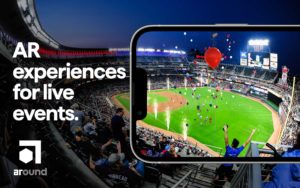
At CES this week, holding company Stagwell debuted a new augmented reality technology it believes will provide a low-barrier entry for many brands and marketers into the metaverse.
The technology, called ARound, is a platform that eschews the often highly individualized AR experience and instead seeks to open it up, allowing venues and retailers to create attractions in the virtual space for their live events, better capturing guests’ attention, personalizing their experiences and increasing brand engagement.
“The purpose of ARound is to change augmented reality from something you do alone in a room with a headset into something you can do as a shared experience, because we believe the most effective experiences for brands, marketers and advertisers are those that are experiential, persistent and shared,” explains Beth Lester Sidhu, chief brand and communications officer with Stagwell.
The technology allows venues, retailers, and others with large spaces that would typically see plenty of traffic to capture that space, build an AR version of it, and then layer different experiences – such as games, direct purchasing, and other interactive elements – on top of it.
As an example, Sidhu cites the MLB mascot race, which typically involves a limited number of participants on an actual baseball field between innings. Rather than being limited to physical space and a small number of participants, teams – including an unnamed franchise which is already employing the ARound platform – can open the experience up to many more participants. H&M was also among the retailers involved in a test conducted last year.
While the applications for the platform are “tremendous,” says Sidhu, “there’s a lot of education.”
“Clients are interested in the product and how they can use it,” she explains. “Marketers want to be at the forefront of what is interesting to consumers, and consumers are excited about AR. But it is hard for most brands to figure out how to play in the space.”
While ARound isn’t a turnkey solution, it is “a scalable way for brands to interact with AR with relative ease and without spending millions of dollars.”
“The power of ARound is in connecting our physical spaces with AR. If we bring those two things together, we can create amazing opportunities for brands, consumers and marketers – really, anybody who wants to be at the forefront,” says Sidhu.
ARound is part of the broader Stagwell Marketing Cloud, which was fully unveiled at CES this year. A suite of integrated SaaS products, it also includes Harris Brand Platform, which provides daily insights on KPIs like brand perception, equity, sales funnels and the impact of marketing campaigns on customer behavior and perceptions; Koalifyed, an end-to-end influencer marketing application; and PRophet, a PR application that uses AI to predict media interest, sentiment and spread of a press story prior to pitching.
Related
Articles
Acquisition, In the News, Press Releases
May 02, 2024
STAGWELL (STGW) ACQUIRES MONTREAL-BASED LUXINE RELATIONS PUBLIQUES
The newly augmented Quebec offering will operate as LuxineVeritas.
Press Releases
May 01, 2024
STAGWELL INC. (NASDAQ: STGW) REPORTS RESULTS FOR THE THREE MONTHS ENDED MARCH 31, 2024
NEW YORK, May 1, 2024 /PRNewswire/ -- (NASDAQ: STGW) –…
Augmented Reality, In the News, Marketing Frontiers
Apr 26, 2024
Legacy Brand, Meet Next-Gen Commerce: Bomb Pop Takes Roblox
Bomb Pop is the most popular ice pop that nobody…
Newsletter
Sign Up
ARound brings interactive shared experiences to the metaverse.
NEW YORK, Dec. 16, 2021 /PRNewswire/ — Stagwell Inc. (NASDAQ: STGW) announced today it will launch an innovative, location-based augmented reality platform, ARound, bringing shared experiences to live events and the retail space by engaging audiences through connected interactions in the metaverse. Stagwell will unveil and demo ARound at CES 2022, within its CES booth #CS-10 in the C-Space at Aria and during CES Unveiled on January 3 at Mandalay Bay and Pepcom Digital Experience on January 4 at The Mirage.
ARound helps venues and retailers create AR attractions for live events, bringing audiences together at scale where they can play, interact, and socialize in completely new and exciting ways. Stadiums and sports teams can now engage casual fans or customers by recapturing their attention and personalizing their experiences. Retail consumers will benefit from a more connected, immersive community experience that increases brand engagement.
“Until now, AR has focused on the individual – but ARound recognizes that the best connections come from shared experiences that connect individuals to the world around them,” said Josh Beatty, ARound founder and CEO. “Location-based AR is a relatively new and evolving space, and spatial computing represents the next major computing innovation – one that will focus less on the way we receive information and more on the way we connect with what is around us. While devices often cause distraction, ARound enables users to be more present at events, connecting people and places through shared technology.”
“Consumers have lost patience for boring, impersonal, and disconnected marketing. And the race for their attention in today’s digital marketplace couldn’t be tighter,” said Mark Penn, Chairman and CEO, Stagwell. “ARound offers clients an opportunity to chart a new course in a powerful – and fast growing – dimension of consumer experiences. We’re proud to support Josh as he works to bring the product to life,” said Mark Penn, Chairman and CEO, Stagwell.
ARound is currently being trialed by global retailer H&M, as well as a Major League Baseball team at their stadium. More partners will be announced early next year.
ARound is the newest product from the Stagwell Marketing Cloud, Stagwell’s growing suite of technology products and services that support business transformation for modern marketers. It was developed as the winning idea at Stagwell’s annual innovation competition, which challenges teams to pitch new product ideas to modernize marketing services and pre-empt the needs of tomorrow’s leading brands. As a winner, ARound received capital and resources from Stagwell to build and launch the product as well as ongoing executive mentorship from the company’s marketing and technology services leaders.
Stagwell Marketing Cloud – powered by a global workforce of 1000+ engineers – arms modern marketers with a toolbox of capabilities spanning influencer marketing, audience segmentation, AI-powered communications tech, competitive brand intelligence and cutting-edge technology in the developing spaces of AI, ML, AR/VR, data processing and fraud detection. Stagwell’s products include Koalifyed, CUE, PRophet, Harris Brand Platform, Telephia, Truly Social, Stage, and Navigator.
To schedule a product demo of ARound at Stagwell’s CES booth, #CS-10, contact (brand@stagwellglobal.com). To schedule a media interview with AR founder, Josh Beatty, contact Pam Golden at pam@GLAPR.com.
About Stagwell Inc.
Stagwell is the challenger network built to transform marketing. We deliver scaled creative performance for the world’s most ambitious brands, connecting culture-moving creativity with leading-edge technology to harmonize the art and science of marketing. Led by entrepreneurs, our 10,000+ specialists in 20+ countries are unified under a single purpose: to drive effectiveness and improve business results for their clients. Join us at www.stagwellglobal.com.
Media Contact
Beth Sidhu
beth.sidhu@stagwellglobal.com
202-423-4414
SOURCE Stagwell Inc.
Related
Articles
Acquisition, In the News, Press Releases
May 02, 2024
STAGWELL (STGW) ACQUIRES MONTREAL-BASED LUXINE RELATIONS PUBLIQUES
The newly augmented Quebec offering will operate as LuxineVeritas.
Press Releases
May 01, 2024
STAGWELL INC. (NASDAQ: STGW) REPORTS RESULTS FOR THE THREE MONTHS ENDED MARCH 31, 2024
NEW YORK, May 1, 2024 /PRNewswire/ -- (NASDAQ: STGW) –…
Augmented Reality, In the News, Marketing Frontiers
Apr 26, 2024
Legacy Brand, Meet Next-Gen Commerce: Bomb Pop Takes Roblox
Bomb Pop is the most popular ice pop that nobody…

